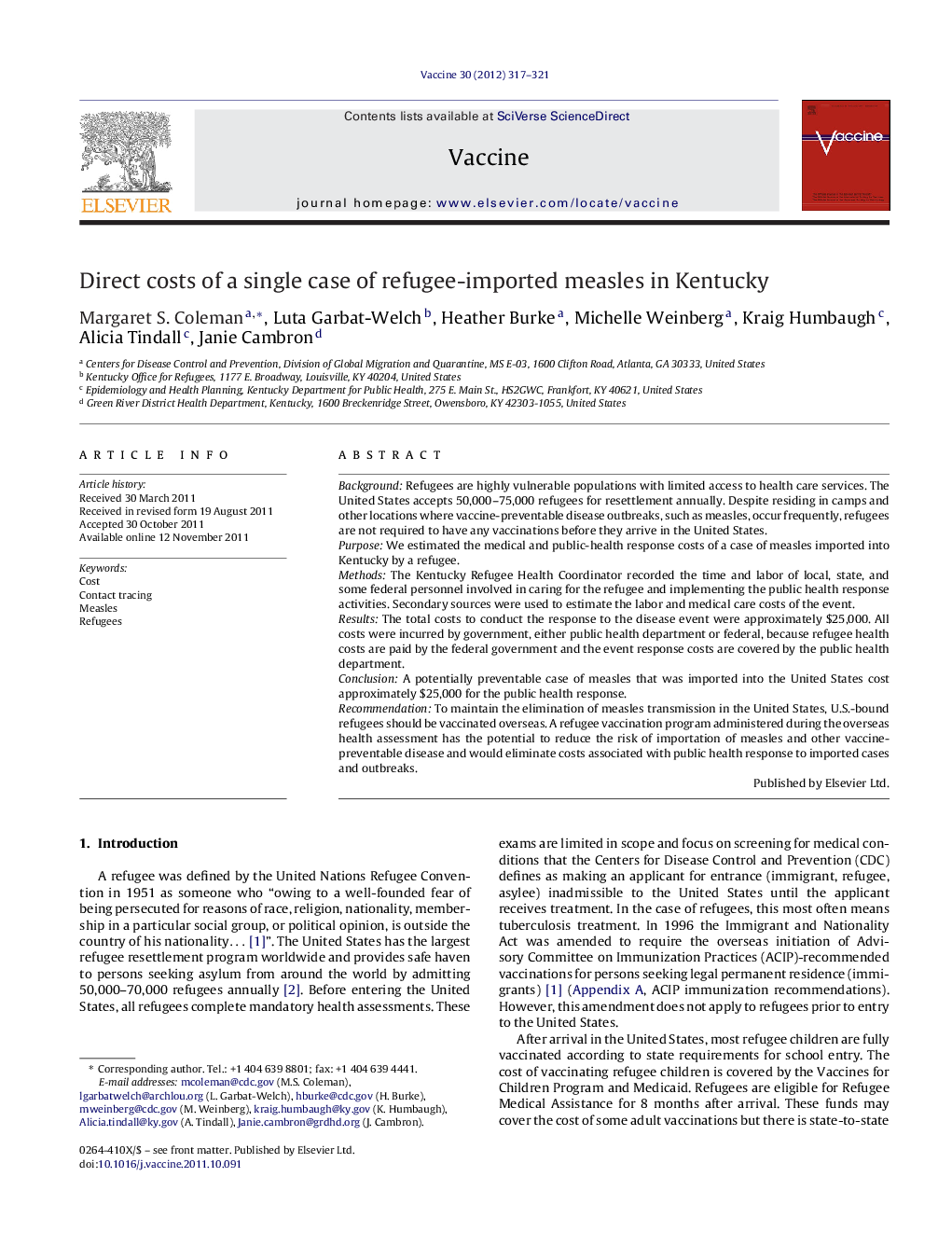| Article ID | Journal | Published Year | Pages | File Type |
|---|---|---|---|---|
| 2403901 | Vaccine | 2012 | 5 Pages |
BackgroundRefugees are highly vulnerable populations with limited access to health care services. The United States accepts 50,000–75,000 refugees for resettlement annually. Despite residing in camps and other locations where vaccine-preventable disease outbreaks, such as measles, occur frequently, refugees are not required to have any vaccinations before they arrive in the United States.PurposeWe estimated the medical and public-health response costs of a case of measles imported into Kentucky by a refugee.MethodsThe Kentucky Refugee Health Coordinator recorded the time and labor of local, state, and some federal personnel involved in caring for the refugee and implementing the public health response activities. Secondary sources were used to estimate the labor and medical care costs of the event.ResultsThe total costs to conduct the response to the disease event were approximately $25,000. All costs were incurred by government, either public health department or federal, because refugee health costs are paid by the federal government and the event response costs are covered by the public health department.ConclusionA potentially preventable case of measles that was imported into the United States cost approximately $25,000 for the public health response.RecommendationTo maintain the elimination of measles transmission in the United States, U.S.-bound refugees should be vaccinated overseas. A refugee vaccination program administered during the overseas health assessment has the potential to reduce the risk of importation of measles and other vaccine-preventable disease and would eliminate costs associated with public health response to imported cases and outbreaks.
► Original data used to estimate medical and public-health response costs of refugee measles case in Kentucky. ► Total disease event response costs were about $25,000. ► Costs were relatively low because measles was not transmitted beyond the index case. ► With secondary transmission, the total event cost would have been much greater.
